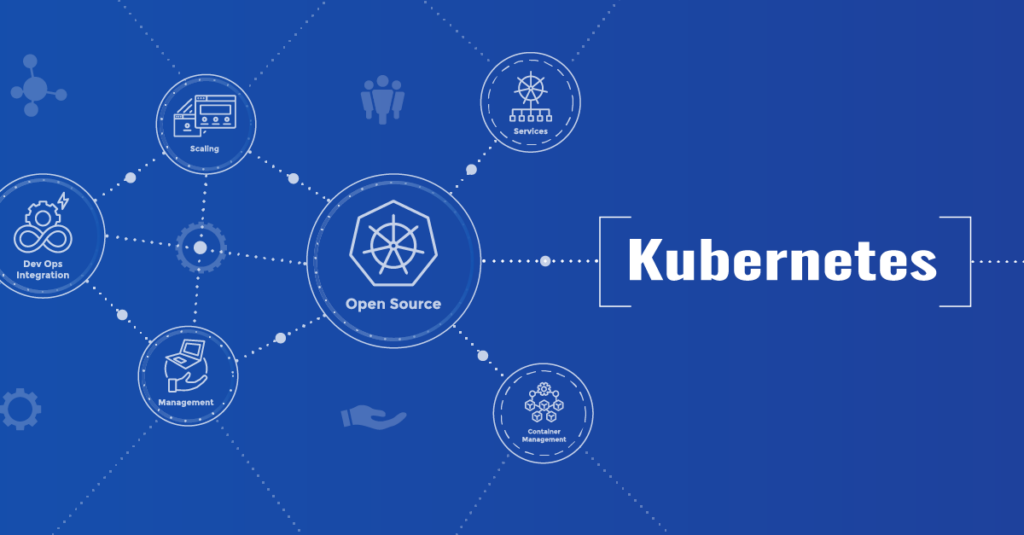The advent of cloud computing has transformed the way businesses design, deploy, and manage their software applications. Infrastructure as a Service (IaaS) has become a cornerstone of modern software development, allowing organizations to build and scale applications efficiently and cost-effectively. Kubernetes, an open-source container orchestration platform, has emerged as a critical tool in this paradigm, providing a robust and flexible foundation for managing containers in an IaaS environment.
Kubernetes Containers: The Building Blocks
Containers are lightweight, standalone, and executable software packages that encapsulate an application and its dependencies. This encapsulation provides consistent and reproducible environments, making the development, testing and deployment of software across various platforms easier. Containers offer many advantages, such as isolation, portability, and rapid provisioning.
Kubernetes is an open-source container orchestration platform developed by Google. It simplifies the deployment, scaling, and management of containerized applications. Kubernetes provides comprehensive features, including automatic load balancing, self-healing capabilities, rollbacks and updates, horizontal scaling, service discovery and resource optimization. With this functionality, Kubernetes simplifies complex container operations, fostering a more efficient software development process.
IaaS Fundamentals
IaaS is one of the three primary cloud service models, alongside Platform as a Service (PaaS) and Software as a Service (SaaS).
IaaS allows organizations to access and manage virtualized computing resources, storage, and networking over the internet. This model abstracts the underlying hardware, allowing businesses to focus on application development without the burden of infrastructure maintenance.
Key Characteristics of IaaS
Businesses can depend on the IaaS cloud service model to add value through the following inherent traits:
- Scalability: IaaS platforms provide on-demand scalability, enabling businesses to add or reduce resources based on their requirements. This flexibility is essential for accommodating varying workloads and traffic spikes.
- Cost-Efficiency: IaaS operates on a pay-as-you-go model, reducing capital expenditures on physical hardware. This cost-effective approach enables organizations to allocate resources more efficiently.
- Reliability: IaaS providers typically offer high availability, redundancy, and disaster recovery options to ensure the reliability of hosted applications and data.
- Self-Service: Users can provision, manage, and monitor resources through a web-based interface or APIs, giving them greater control and autonomy.
- Geographical Reach: IaaS providers often have data centers in multiple locations, allowing businesses to deploy resources closer to their target audience, improving performance and latency.
Key Benefits
IaaS delivers several benefits to businesses who utilize it including:
- Portability and Consistency: Kubernetes containers provide a consistent environment for applications, regardless of the underlying infrastructure. This portability is a critical advantage for software development, as it streamlines the deployment process. Developers can write code, package it within a container, and rely on Kubernetes to maintain the same environment in development, testing, and production. This consistency minimizes “it works on my machine” issues and simplifies the development pipeline.
- Self-Healing Capabilities: Kubernetes’ self-healing features align perfectly with IaaS’s high availability and redundancy. In the event of a hardware failure or resource depletion, Kubernetes automatically reschedules containers to healthy nodes. This ensures that applications remain available and reliable, even in the face of infrastructure issues, further enhancing the resilience of software systems.
- Scalability and Load Balancing: A fully functioning application solution built on Kubernetes can be built properly once and automatically scale to meet the needs of any size customer, small to medium or large to enterprise. Kubernetes simplifies the process of scaling applications up or down based on demand. In conjunction with IaaS, businesses can easily expand their computing resources when facing surges in traffic or workloads. Kubernetes can auto-scale pods horizontally, and IaaS platforms can automatically provision additional virtual machines as needed. This dynamic scaling approach ensures that applications maintain high performance without manual intervention.
- Security and Data Ownership: Kubernetes allows software applications to be deployed in customer’s cloud instances, yet the solution provider maintains software and security updates. As a result, the data that the software deployed via Kubernetes consumes never leaves the customer’s premises. This reduces the risk of data loss and sensitive PII being stolen or compromised by having to trust another third party with another companies’ critical data. Having the data stay in the customers private or public hosted organization means the data remains governed by existing controls and oversight. This reduces the need for complex contractual arrangements covering data security and third-party vendor risk.
Practical Applications
The flexibility of Kubernetes is evident in the many ways it can be used including:
- Continuous Integration and Continuous Deployment (CI/CD): Kubernetes containers in an IaaS environment enhance CI/CD pipelines by providing a standardized, reproducible environment for testing and deployment. CI/CD tools can seamlessly integrate with Kubernetes to automate testing and deployment processes, allowing for rapid and reliable software delivery.
- Microservices Architecture: Kubernetes is well-suited for managing microservices-based applications. IaaS platforms complement this by providing the underlying infrastructure required for microservices to operate. Organizations can deploy individual microservices as containers on Kubernetes, ensuring scalability and ease of management for complex, distributed applications.
- Data-Intensive Applications: Data-intensive applications, such as big data analytics and machine learning, benefit from the combination of Kubernetes and IaaS. Kubernetes can manage the containers for these applications, while IaaS platforms offer high-performance storage and computer resources, ensuring efficient data processing and analysis.
- DevOps Adoption: The adoption of DevOps practices is further accelerated when using Kubernetes containers in an IaaS environment. DevOps emphasizes collaboration between development and operations teams and requires automation for seamless delivery and operations. Kubernetes and IaaS enable these practices by automating deployment, scaling, and resource management, fostering a culture of continuous improvement and collaboration.
- A parting warning: A journey into IaaS, containers, full automation, cloud agnostic solutions are not the correct solution every time. Spend some time figuring out how often the solution will need to be deployed, how much time will be spent on operations after it is deployed, and so on. Undoubtedly, there are more upfront engineering hours using this approach. Please be sure all the benefits, such as flat operational costs regardless of scale, the consistency of solution deployment and other benefits outweigh the extra engineering time that will be invested upfront when compared to more traditional system designs.
Lessons We Learned with Skylight
We began developing Skylight in the early summer of 2022. We knew it was going to be a lot of work and a paradigm shift for how our development team was used to working.
Chad Allen, epay VP of software development and principal architect, was always supportive of what we were trying to do. However, we could always tell in the back of his mind he was wondering if all the upfront work was worth it. After all, this was time spent away from developing new features!
A year later in the summer of 2023, he is now entirely on-board with this approach. In fact, he keeps asking when we are going to go back and do the same process for the rest of our applications.
Like the adage says, the reward for great work is often more work.



